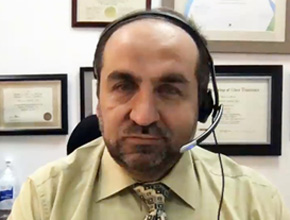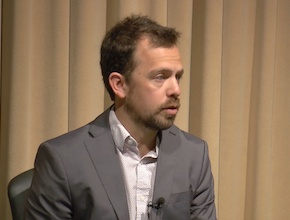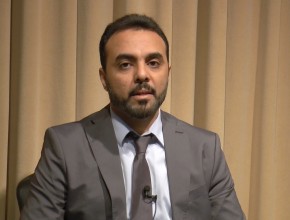References
Rochwerg B, Oczkowski SJ, Siemieniuk RAC, et al. Corticosteroids in Sepsis: An Updated Systematic Review and Meta-Analysis. Crit Care Med. 2018 Sep;46(9):1411-1420. doi: 10.1097/CCM.0000000000003262. PubMed PMID: 29979221.Annane D, Pastores SM, Rochwerg B, et al. Guidelines for the diagnosis and management of critical illness-related corticosteroid insufficiency (CIRCI) in critically ill patients (Part I): Society of Critical Care Medicine (SCCM) and European Society of Intensive Care Medicine (ESICM) 2017. Intensive Care Med. 2017 Dec;43(12):1751-1763. doi: 10.1007/s00134-017-4919-5. Epub 2017 Sep 21. Erratum in: Intensive Care Med. 2018 Feb 23. PubMed PMID: 28940011.
Pastores SM, Annane D, Rochwerg B; Corticosteroid Guideline Task Force of SCCM and ESICM. Guidelines for the diagnosis and management of critical illness-related corticosteroid insufficiency (CIRCI) in critically ill patients (Part II): Society of Critical Care Medicine (SCCM) and European Society of Intensive Care Medicine (ESICM) 2017. Intensive Care Med. 2018 Apr;44(4):474-477. doi: 10.1007/s00134-017-4951-5. Epub 2017 Oct 31. PubMed PMID: 29090327.
Venkatesh B, Finfer S, Cohen J, et al; ADRENAL Trial Investigators and the Australian–New Zealand Intensive Care Society Clinical Trials Group. Adjunctive Glucocorticoid Therapy in Patients with Septic Shock. N Engl J Med. 2018 Mar 1;378(9):797-808. doi: 10.1056/NEJMoa1705835. Epub 2018 Jan 19. PubMed PMID: 29347874.
Annane D, Renault A, Brun-Buisson C, et al; CRICS-TRIGGERSEP Network. Hydrocortisone plus Fludrocortisone for Adults with Septic Shock. N Engl J Med. 2018 Mar 1;378(9):809-818. doi: 10.1056/NEJMoa1705716. PubMed PMID: 29490185.
Lamontagne F, Rochwerg B, Lytvyn L, et al. Corticosteroid therapy for sepsis: a clinical practice guideline. BMJ. 2018 Aug 10;362:k3284. doi: 10.1136/bmj.k3284. PubMed PMID: 30097460; PubMed Central PMCID: PMC6083439.
Rhodes A, Evans LE, Alhazzani W, et al. Surviving Sepsis Campaign: International Guidelines for Management of Sepsis and Septic Shock: 2016. Intensive Care Med. 2017 Mar;43(3):304-377. doi: 10.1007/s00134-017-4683-6. Epub 2017 Jan 18. PubMed PMID: 28101605.
Roman Jaeschke, MD, MSc: Good afternoon, welcome to another edition of McMaster Perspective. Our guest today is Doctor Bram Rochwerg. Bram, over the last several months you have become a world expert in the use of steroids in critical illness. You are one of the main authors of international guidelines, and you were one of the main speakers at the meeting of the Society of Critical Care Medicine (SCCM) a few weeks ago. How would you summarize the knowledge about the use of steroids that critical care physicians should have these days? Let’s start from sepsis.
Bram Rochwerg, MD, MSc: Thanks for the introduction. Steroids in sepsis is one of those interventions that has evolved tremendously over the last few years. When you look back, the first randomized controlled trials (RCTs) on steroids in sepsis were published in 1963. Pretty unbelievable. In the intervening 56 years, there have been almost 50 RCTs published. It seems like practice has shifted. There have been times where people would use steroids fairly ubiquitously and times where it seemed they were out of favor and not used as much.
The big change within the last year or two was the publication of the ADRENAL (Adjunctive Corticosteroid Treatment in Critically Ill Patients with Septic Shock) trial by the Australian-New Zealand group as well as the APROCCHSS (Activated Protein C and Corticosteroids for Human Septic Shock) trial by the French group led by Djillali Annane. That really has informed practice and led to this change, and it lasted a while. In fact, it is what precipitated us to update the guideline, the direction for clinicians; as part of that, we updated the most recent systematic review and meta-analysis.
I can get into details of the results that we found and the recommendations, but essentially—and this is consistent with the guidance that we offered—I think the majority of patients, certainly over a half, would probably benefit from a short course of corticosteroids in sepsis. As I mentioned, I think this is consistent with the summary of the evidence to date, with the 2 most recent large RCTs, and with the recommendation that we made as part of the BMJ’s “Rapid Recommendations.”
Roman Jaeschke: When you are saying “sepsis,” what do we mean by it these days? People may have different understanding of the word.
Bram Rochwerg: It is a great point. Because we have such a history of RCTs that have examined this, we have new definitions, the Third International Consensus Definitions for Sepsis and Septic Shock (Sepsis-3) that have just come out in the last couple of years. Unfortunately, a lot of RCTs included there used varying definitions for sepsis. It is relatively challenging to say exactly which diagnostic criteria we are talking about.
That being said, there is a lot of similarities, even between Sepsis-1, Sepsis-2, and Sepsis-3. I think the biggest departure is that previous guidance from clinical practice recommendations suggested only to give corticosteroids in patients with septic shock. Even the most recent SCCM critical illness-related corticosteroid insufficiency (CIRCI) guidelines and the Surviving Sepsis Campaign 2016 guidelines say only to [use corticosteroid therapy in] those with septic shock that is resistant to fluid therapy and on moderate- to high-dose vasopressors. That was left relatively ambiguous, but it had been the guidance up until the last year.
I think the big transition in our guidelines is that we recommend corticosteroids in all patients with sepsis, not just septic shock. The reason we do this—which as I mentioned is a departure from probably the most recent guidance—is that because of the amount of evidence we had, we were able to do a meta-regression as part of our meta-analysis. And we looked to see whether severity of sepsis, control-group mortality, or the fact that somebody had sepsis or septic shock was an explanatory variable and had effect modification on the pooled point estimates. What we found was that control-group mortality or severity of sepsis did not influence the relative risk, relative effect of corticosteroids.
Roman Jaeschke: To translate it into human language, the effect was the same whether you were hypotensive and from the very high-risk group versus the lower-risk group.
Bram Rochwerg: Exactly. The relative effect was consistent. We found about a 7% reduction in mortality with corticosteroids. That 7% reduction was the same whether you had sepsis or septic shock.
Roman Jaeschke: A 7% relative risk reduction.
Bram Rochwerg: Exactly. The folks that would rationalize only giving corticosteroid therapy to the sickest patients will say that 7% relative reduction is going to be a larger absolute reduction in a sicker population and a smaller absolute reduction in a less sick population.
Roman Jaeschke: Is this a strong recommendation and if you do not do it, you are committing an error? Or is it a weak recommendation, in which case nobody should fault you if you do not do that?
Bram Rochwerg: We ended up making a conditional recommendation despite—
Roman Jaeschke: Conditional meaning weak, in other words. A suggestion.
Bram Rochwerg: It is synonymous. We made a conditional recommendation partly because the certainty around that mortality effect was low. When we looked at it based on our Grading of Recommendations Assessment, Development, and Evaluation (GRADE) approach, which we used to rate certainty, the certainty of that reduction in mortality was low. That being said, we already had higher-certainty evidence that corticosteroids reduced organ dysfunction and led to improved shock resolution within a week. So that weighing of benefits as well as harms, which we have not discussed yet in terms of corticosteroids, led to the conditional recommendation.
Roman Jaeschke: Give me a few words on harm.
Bram Rochwerg: The bottom line is that I think the majority of patients would benefit from corticosteroid therapy, but there might be a large minority that would choose not to.
To answer your question on harm, I think we saw certain harms when we looked at our pooled analysis: things like hypernatremia, hyperglycemia, neurologic effects. But those are all correctible and treatable in the intensive care unit (ICU). Probably the one that is most dramatic and worries us the most is the effect of ICU-acquired weakness. We did find low-certainty evidence that corticosteroids do increase ICU-acquired weakness. We know from our increasing body of literature the morbidity and mortality associated with weakness in our ICU survivors.
Roman Jaeschke: Bottom line: I suspect you are on the side of using steroids at a reasonably low threshold. Correct?
Bram Rochwerg: Certainly. I think that is what has changed in my practice lately. Consistent with the Surviving Sepsis Campaign, I used to wait until I was on moderate doses of vasopressors.
Roman Jaeschke: As long as we remember it is a suggestion, or a conditional recommendation, I think our listeners may benefit from this exchange. Thank you very much, Doctor Rochwerg.
Bram Rochwerg: My pleasure. Thanks for having me.
 English
English
 Español
Español
 українська
українська










